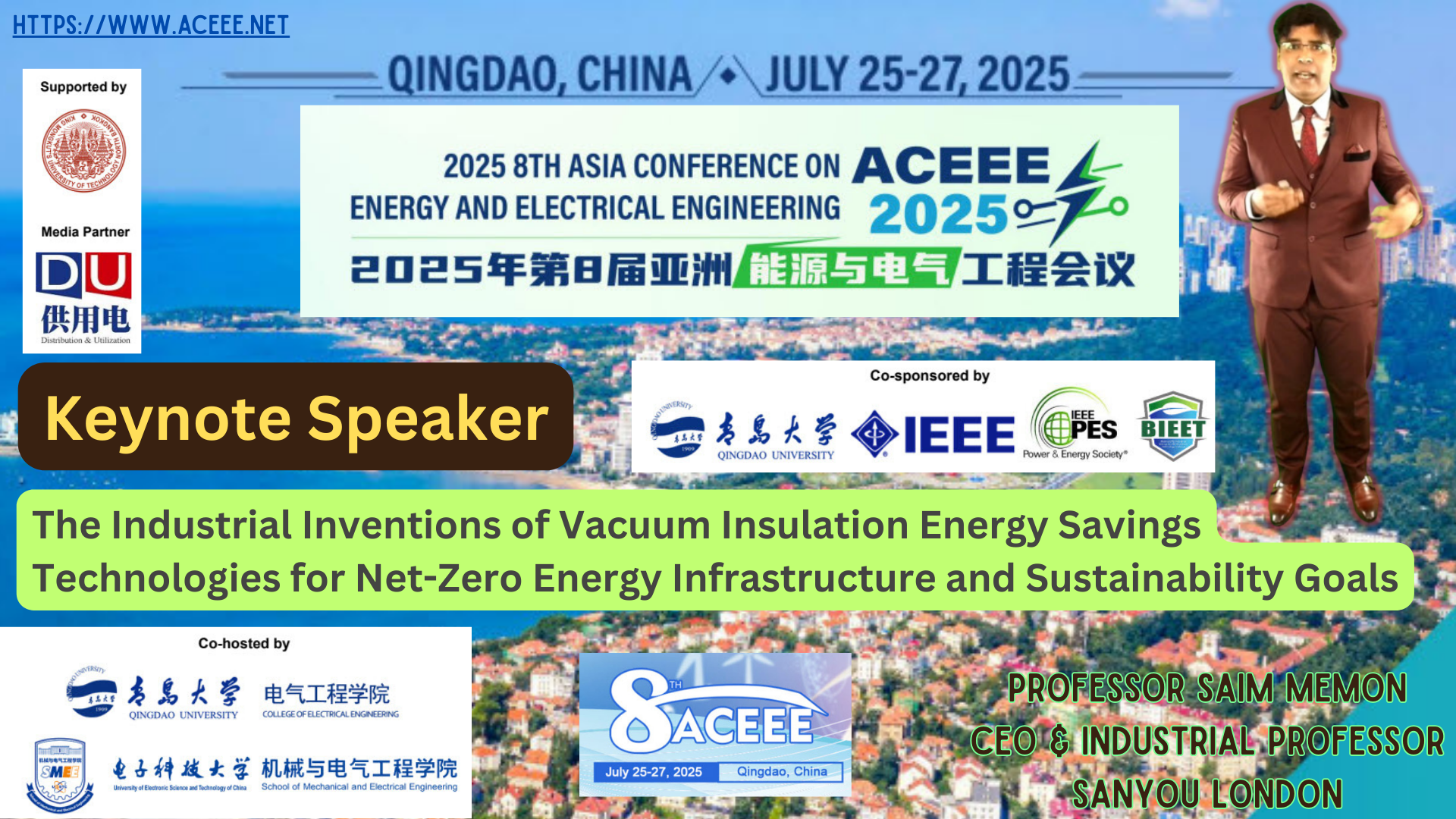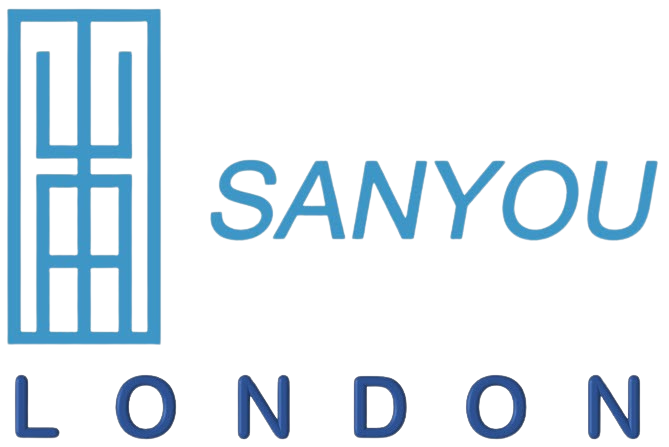
ACEEE 2025 Qingdao: Vacuum-Insulation Inventions for Net-Zero Infrastructure — Invited Keynote
Event: 8th Asia Conference on Energy and Electrical Engineering (ACEEE 2025)
Dates: 25–27 July 2025
Location: Qingdao, China
Co-sponsors: Qingdao University; Beijing CAS Industrial Energy and Environment Technology Institute (BIEET)
Host: College of Electrical Engineering, Qingdao University
Co-host: School of Mechanical and Electrical Engineering, University of Electronic Science and Technology of China
Support: King Mongkut’s University of Technology North Bangkok, Thailand
Speaker: Invited keynote by Professor Saim Memon, CEO of Sanyou London
What happened?
ACEEE 2025 brought scholars and practitioners together to exchange the newest results in energy science and electrical engineering. The programme featured an invited keynote from Professor Saim Memon connecting vacuum-insulation inventions to practical energy savings across buildings, transport, refrigeration and smart-grid contexts.
Keynote title
The Industrial Inventions of Vacuum Insulation Energy Savings Technologies for Net-Zero Energy Infrastructure and Sustainability Goals
What did the keynote show?
A portfolio with measurable performance—progressed from lab concepts to prototyping and commercial readiness:
- Vacuum Insulated Wallpaper (VIW) — a ~4 mm laminate using 3 mm VIPs; λ ≈ 5 mW·m⁻¹·K⁻¹. Supplied as 200 × 200 mm self-adhesive tiles for easy, low-risk install. In London solid masonry trials, VIW reduced wall U-value by 71% and heating demand by up to 30%.
- Vacuum Insulation Panels (VIPs) —
• Fibreglass-core, 15 mm: λ ≈ 2.5 mW·m⁻¹·K⁻¹, centre-of-panel U ≈ 0.16 W·m⁻²·K⁻¹.
• Fumed-silica, 25 mm: λ ≈ 4.5 mW·m⁻¹·K⁻¹, U ≈ 0.17 W·m⁻²·K⁻¹. - Decorative Integrated VIP (DVIP) — a 30 mm external system embedding a vacuum core between calcium-silicate back and metal or Mid-Century-Modern façades; λ ≈ 7 mW·m⁻¹·K⁻¹ with fire-resistant, weather-proof construction designed to meet EN 13501-1 Class A1/A2 targets and survive ≥ 35 years accelerated ageing.
- Vacuum-Insulated Curtain (VIC) — for transparent façades; 7 mm assembly with λ ≈ 13.1 mW·m⁻¹·K⁻¹ and U ≈ 1.87 W·m⁻²·K⁻¹. In Riyadh single-glazed offices, VIC cut cooling loads by ≥ 23%.
- Vacuum-Insulated Heatable Curtain (VIHC) — adds low-wattage radiant heating (~1 kWh per three-hour cycle) for cold climates, pairing comfort with envelope efficiency.
- Vacuum-Insulated Bag-or-Box (VIBB) — modular VIP blocks inside polymer shells for medical and fresh-food logistics, preserving contents up to 147 hours without powered refrigeration.
Why does this matter?
- Envelope first: Better envelopes reduce source energy before generation or storage is added—vital for smart-grid stability and tariff management.
- Space-efficient retrofits: Millimetre-scale thickness achieves strong U-values where floor area, heritage or occupancy constrain traditional options.
- All-climate utility: In cold-arid regions they retain heat; in hot-arid regions they block heat ingress—lowering HVAC peaks and operating cost.
- Compliance and longevity: Designs target recognised fire and durability benchmarks to support procurement and long-term performance.
How does this translate to systems?
Q: Where do these materials sit in an energy-systems plan?
A: As passive first measures that reduce the load on generation, storage and controls. Lower, flatter demand profiles help the smart grid integrate fast-charge hubs, heat pumps and flexible loads with fewer bottlenecks.
Q: What is the techno-economic case?
A: Thin insulation shortens payback by avoiding deep build-ups, reducing disruption and protecting usable space—crucial in occupied housing, healthcare and education estates.
Takeaway for attendees
Vacuum-insulation technologies provide a shape-flexible, scalable route to 20–90% energy-use reductions across building construction, retrofits, refurbishments, storage and transport, and AI electronics and automation—a materials-led pathway towards net-zero operation and cold-chain resilience.
Work with Sanyou London
- Spec sheets, samples and pilots: VIW, VIP, DVIP, VIC/VIHC and VIBB for retrofit and new-build.
- Partnerships: universities, developers, architects, contractors, local suppliers and distributors seeking space-efficient energy savings.
Contact: Visit www.sanyoulondon.com for specifications, pricing, videos and FAQs, or reach Sanyou London Customer Service.
Media & speaking enquiries: Professor Saim Memon
Keywords: Vacuum Insulation; Vacuum Insulated Wallpaper (VIW); Decorative Integrated VIP; Vacuum Insulated Bag-or-Box (VIBB); Vacuum Insulation Panel (VIP); Net Zero Energy; Buildings; Thermal Conductivity; Energy Consumption.
Share

